The Palazzo Morosini in the Castello sestiere has a beautiful gothic courtyard, which unfortunately is inaccessible to the general public. The building is now a high school.
The building is located between the Rio San Giovanni in Laterano, and the Barbaria de le Tole on the land side. On the canal side it has a private bridge to an entrance to the building, and a cast iron gate to the older courtyard, while a modern gate on the land side leads to the main courtyard.
The main attraction of the Palazzo Morosini is the older courtyard, which is, however, not visible from the outside.
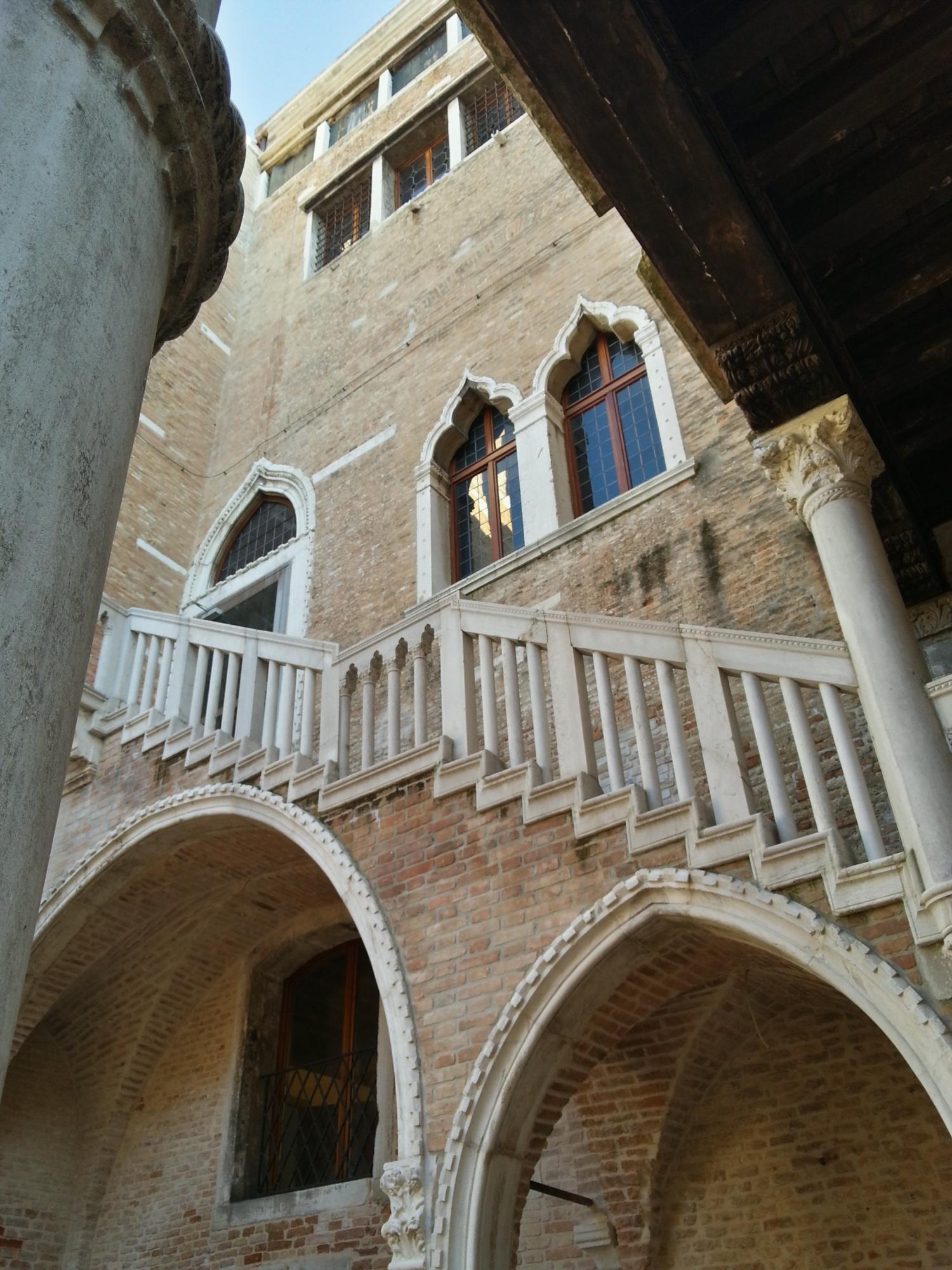
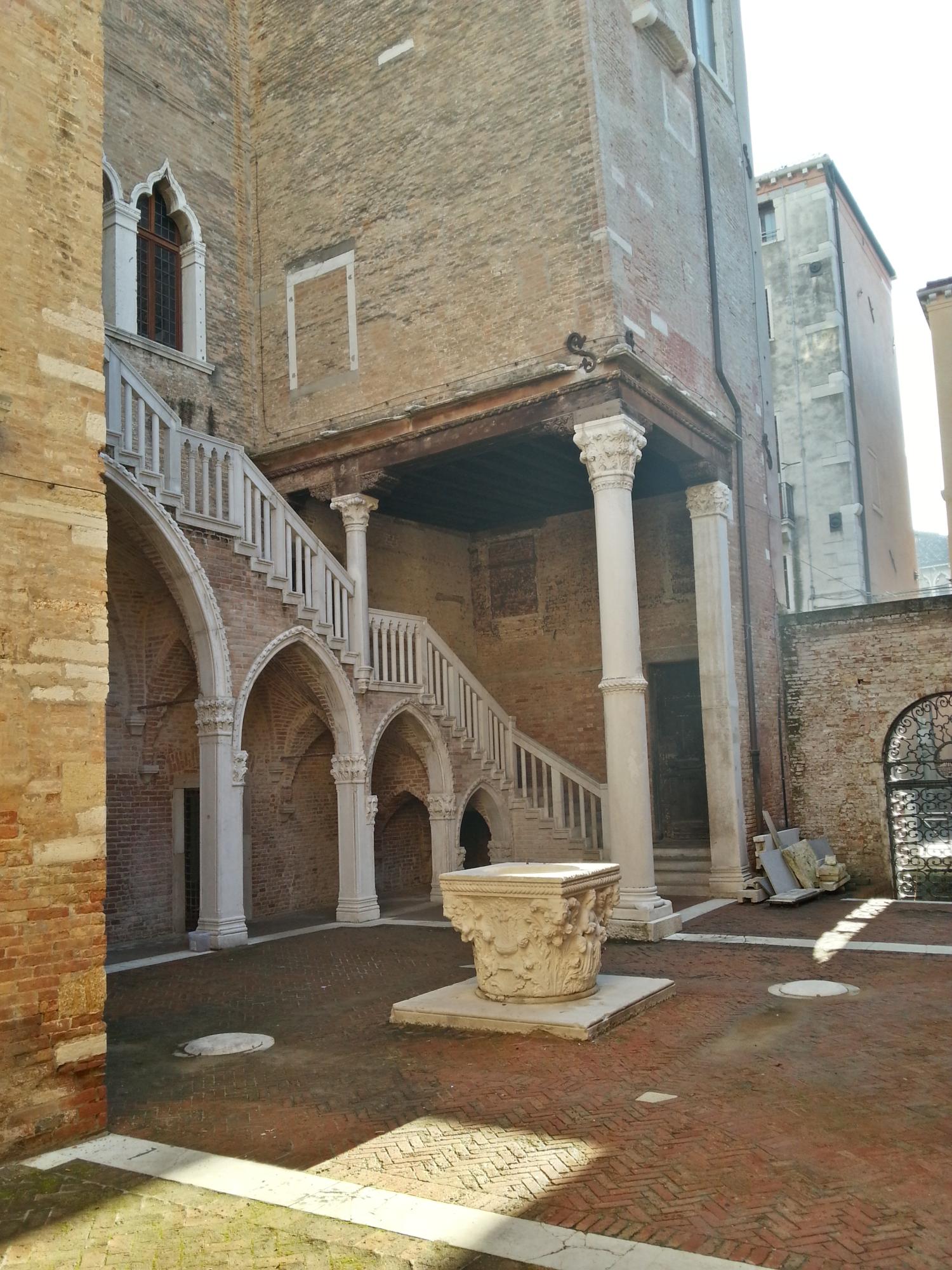
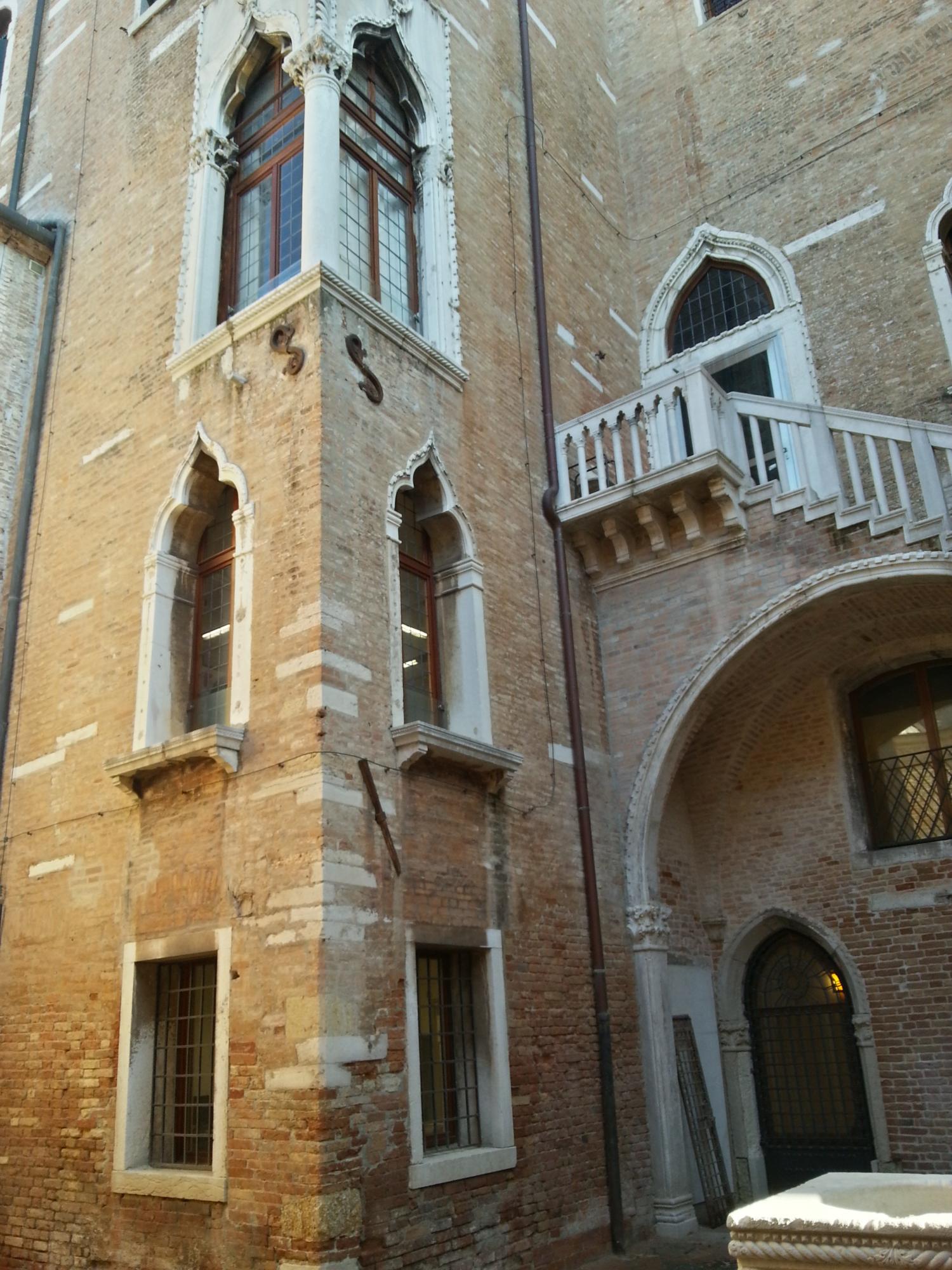
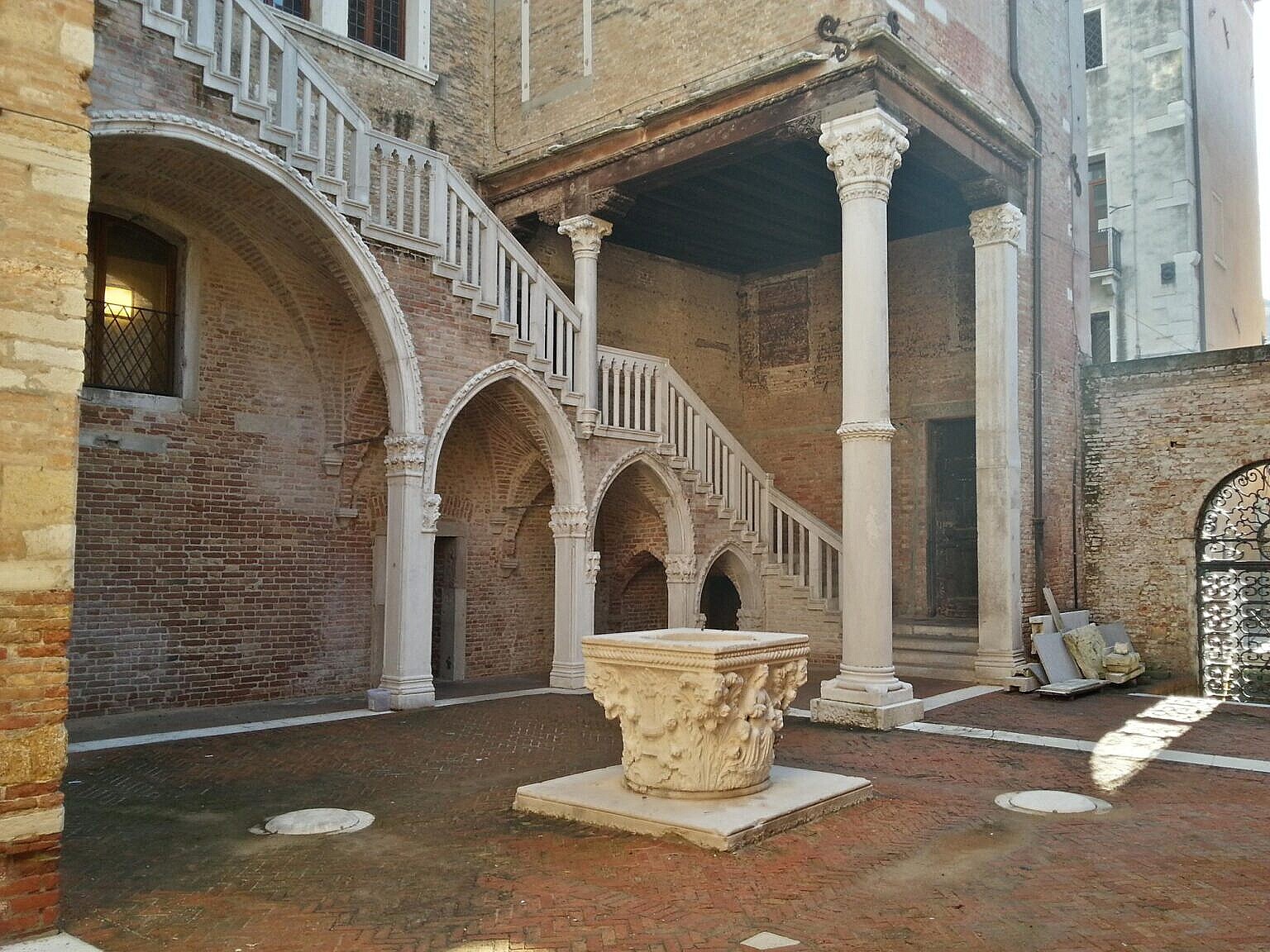
The Gothic Courtyard
The parts of the palace around the older courtyard are at least from the 1400s, which is evident from the architecture. The flamboyant Gothic is typical of the 1400s, and there are very few Byzantine elements which might indicate an earlier date.
A modern inscription in a corner of the courtyard implies an earlier date, though. It states that doge Michele Morosini (1308-82) lived there. I have not found that claim repeated elsewhere, but as Michele Morosini is buried in the nearby Church of SS Giovanni e Paolo, it is not unrealistic.
Within the Gothic courtyard a magnificent outside stairway, supported by a series of pointed arches, leads to the piano nobile. External stairs to the piano nobile is a typical trait of medieval Venetian architecture.
The piano nobile features a fairly rare corner window.
A marvellous well-head (vera da pozzo) is at the centre of the courtyard. More than a well, it was a cistern for collecting rainwater. The well-head still has marks in the stone made by the ropes used to pull up the buckets of water.
The courtyard retains a pavement of burned bricks in a fish bone pattern, as was customary in the 1300s and 1400s.
This would no doubt have been a worthy home for a doge in the late 1300s.
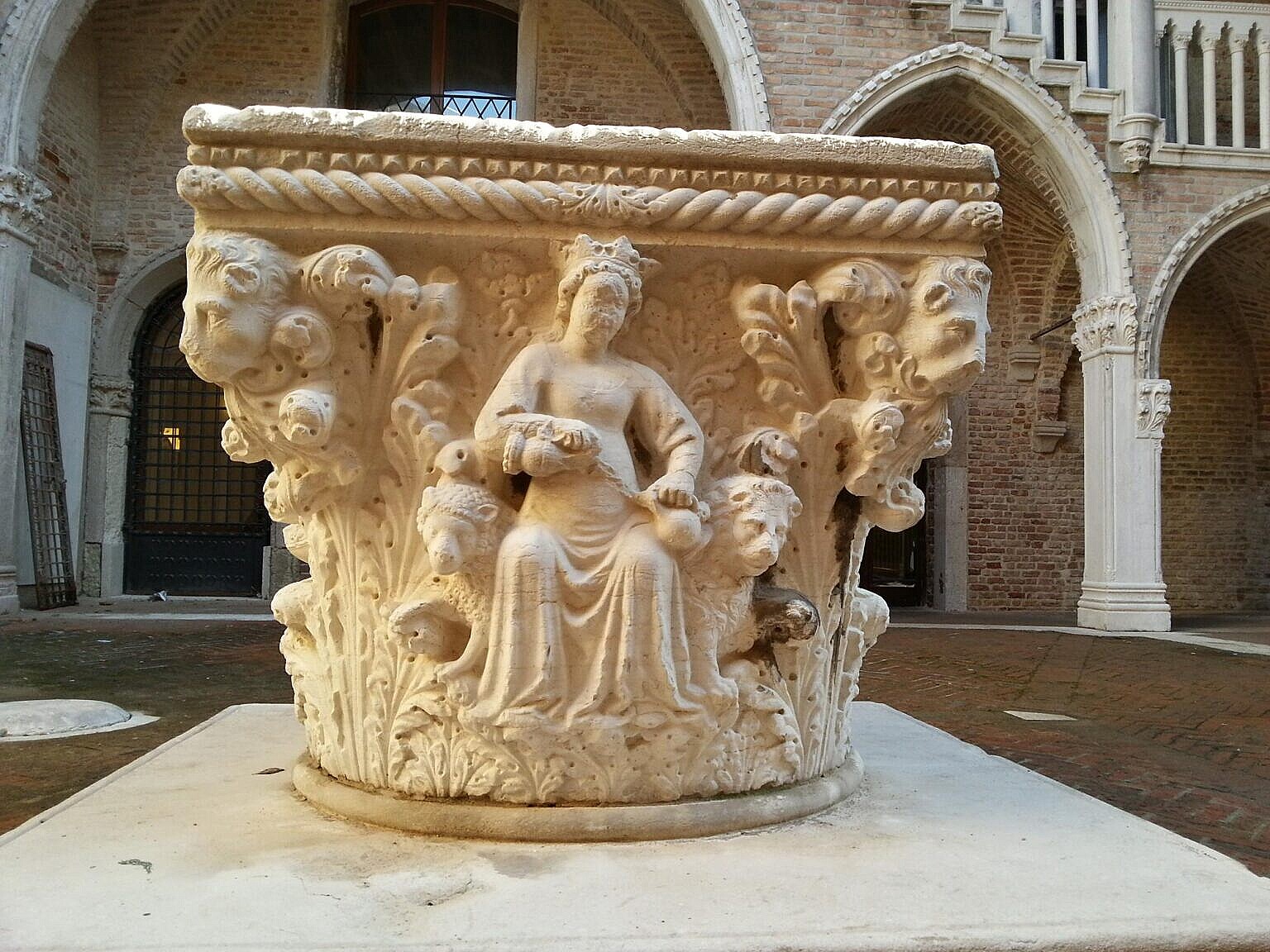


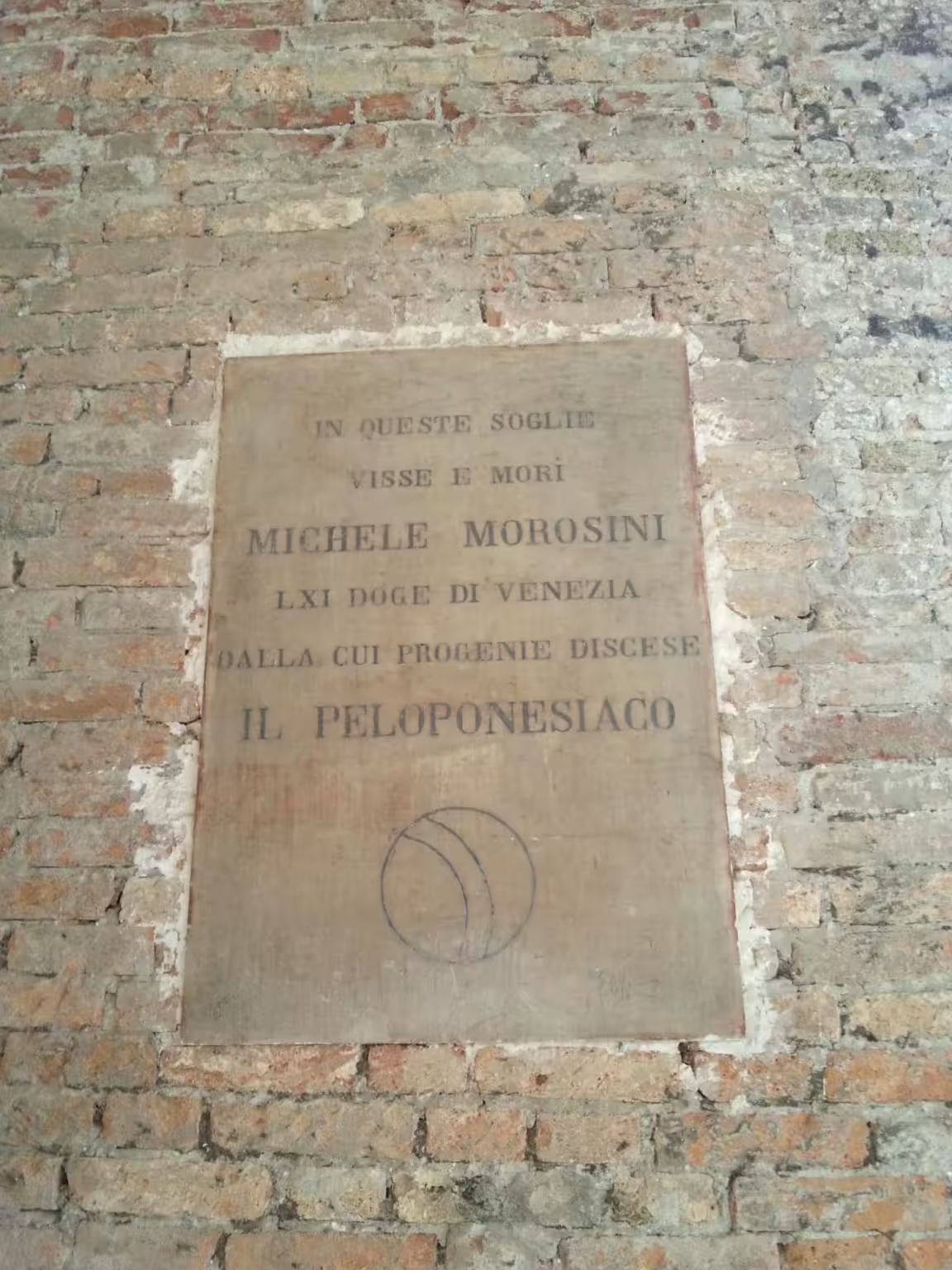
The Renaissance Elements
The main façade on the Rio San Giovanni in Laterano is from the 1500s, in the renaissance style, and likewise the façade on the main courtyard or garden towards the Barberia de le Tole.
While these parts of the palace are easy to see from the outside, they’re far less interesting.
The cast iron gate on the canal side is most likely also from the 1500s. It carries, alongside the lion of St Mark, the inscription “tu fortitudo mea” (“you are my strength”) in Latin.

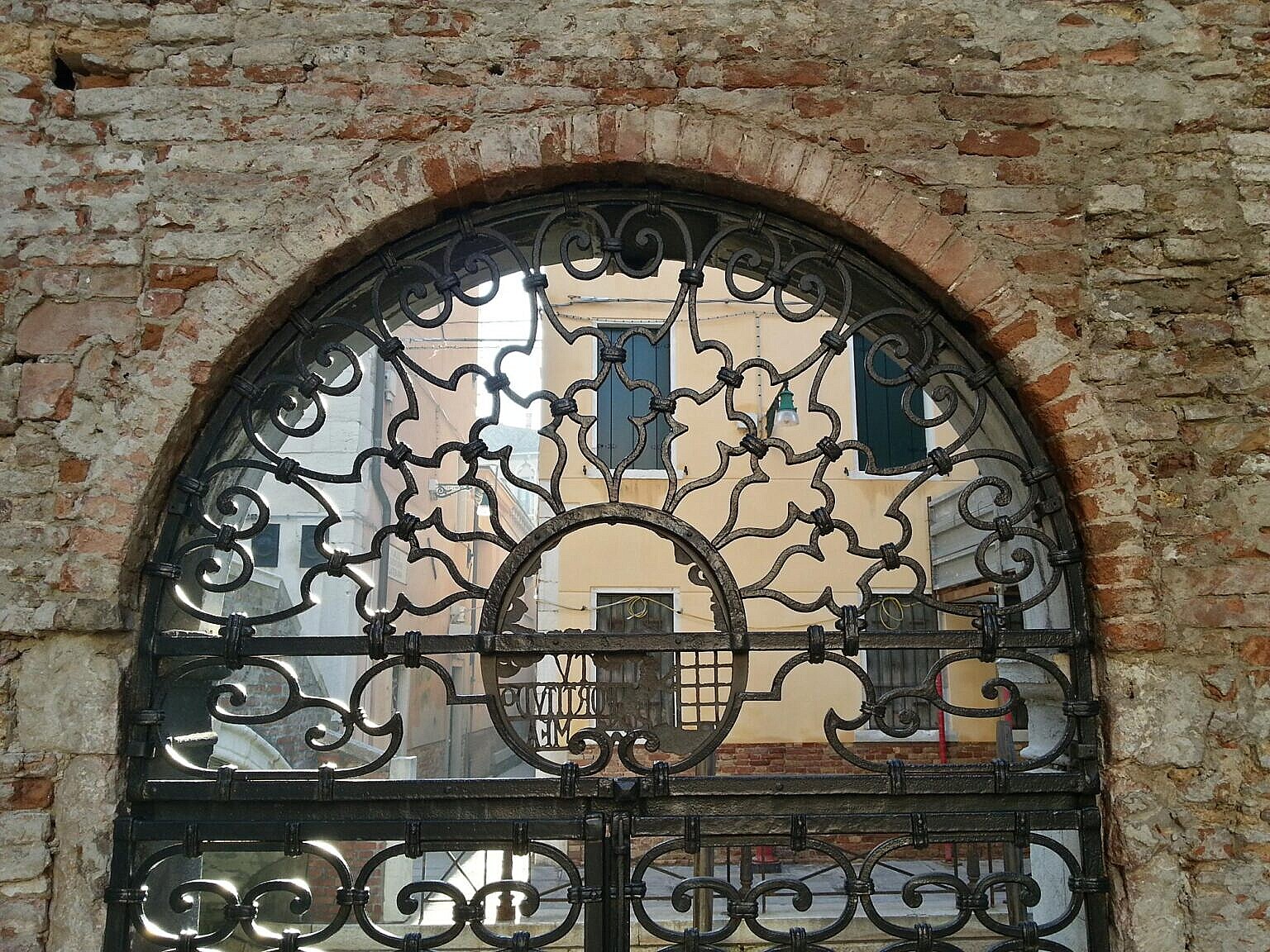
The Fire of 1686
A large fire in 1686 destroyed a lot of the houses in the Barbaria de le Tole near the Palazzo Morosini. That gave the Morosini family a new possibility.
The houses behind the palace along the Barberia de le Tole were consequently never rebuilt, and the area was made into a walled garden for the palace, which is still there but not very well-kept.
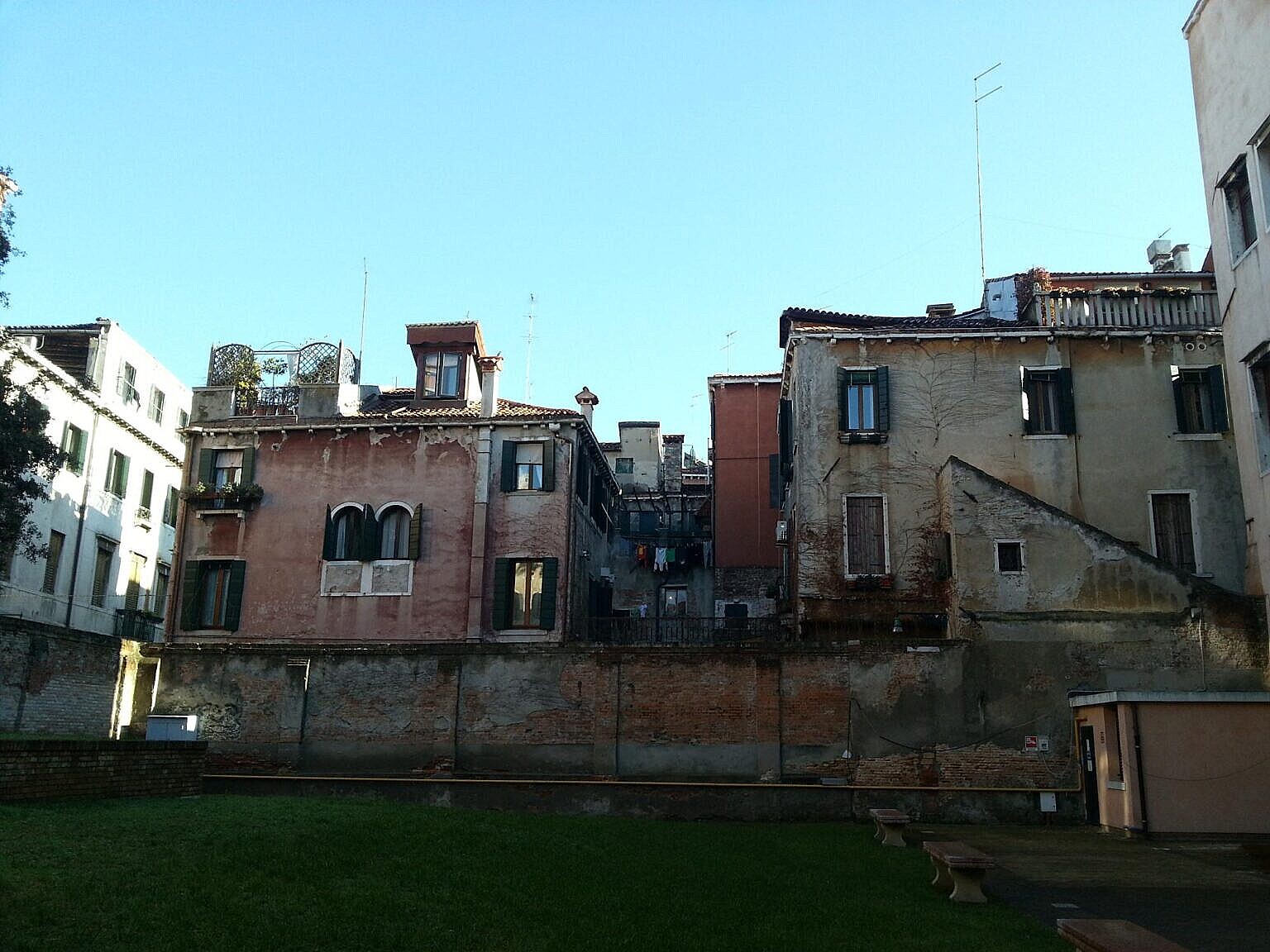
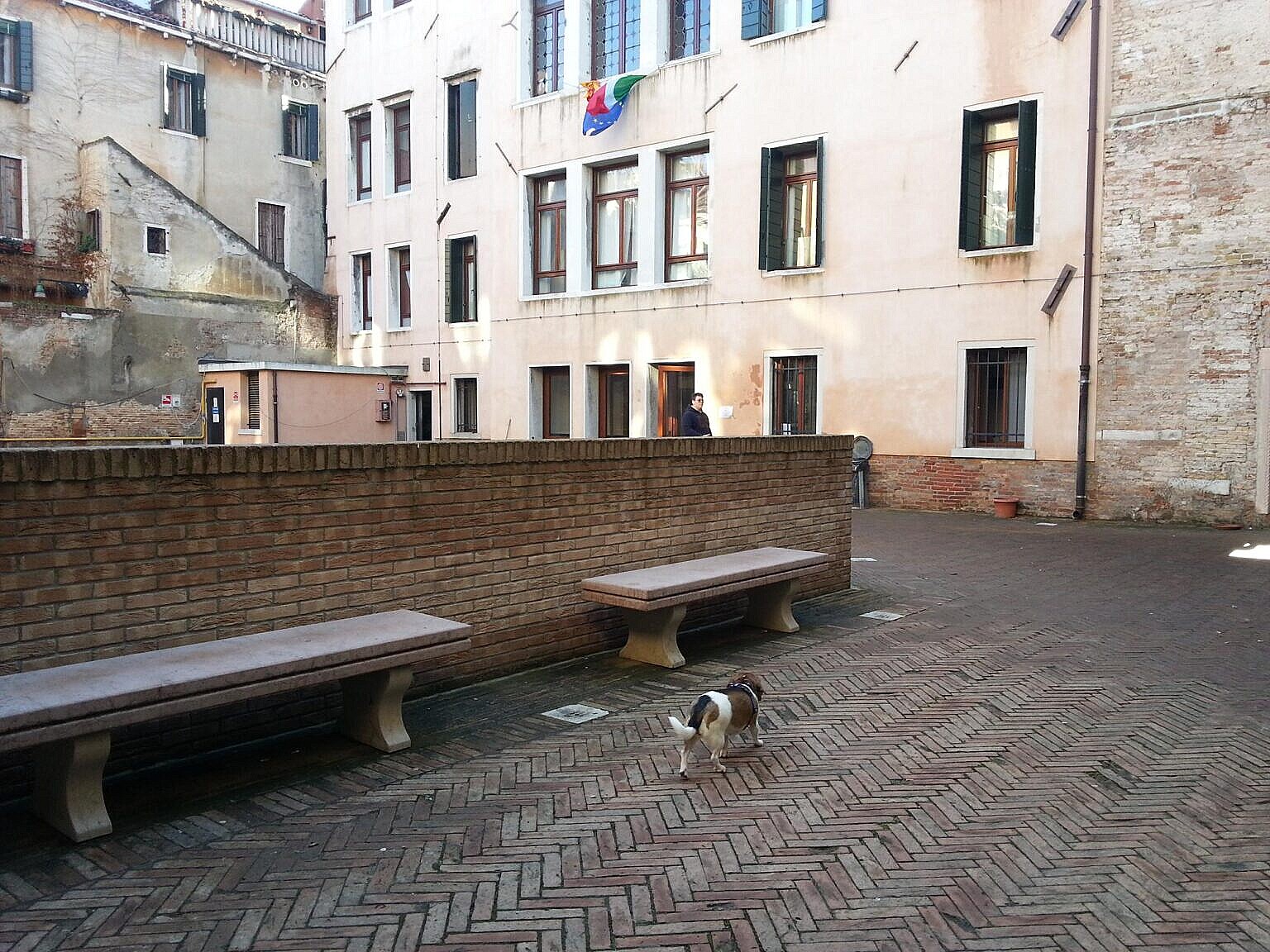
Bibliography
Brusegan, Marcello. I monumenti di Venezia : storia, arte, segreti, leggende, curiosità. Roma: Newton Compton, 2007.
Maretto, Paolo. La Casa veneziana nella storia della città: dalle origini all’Ottocento. Venezia: Marsilio, 1987.
Tassini, Giuseppe. Curiosità Veneziane ovvero Origini delle denominazioni stradali di Venezia. 1863.


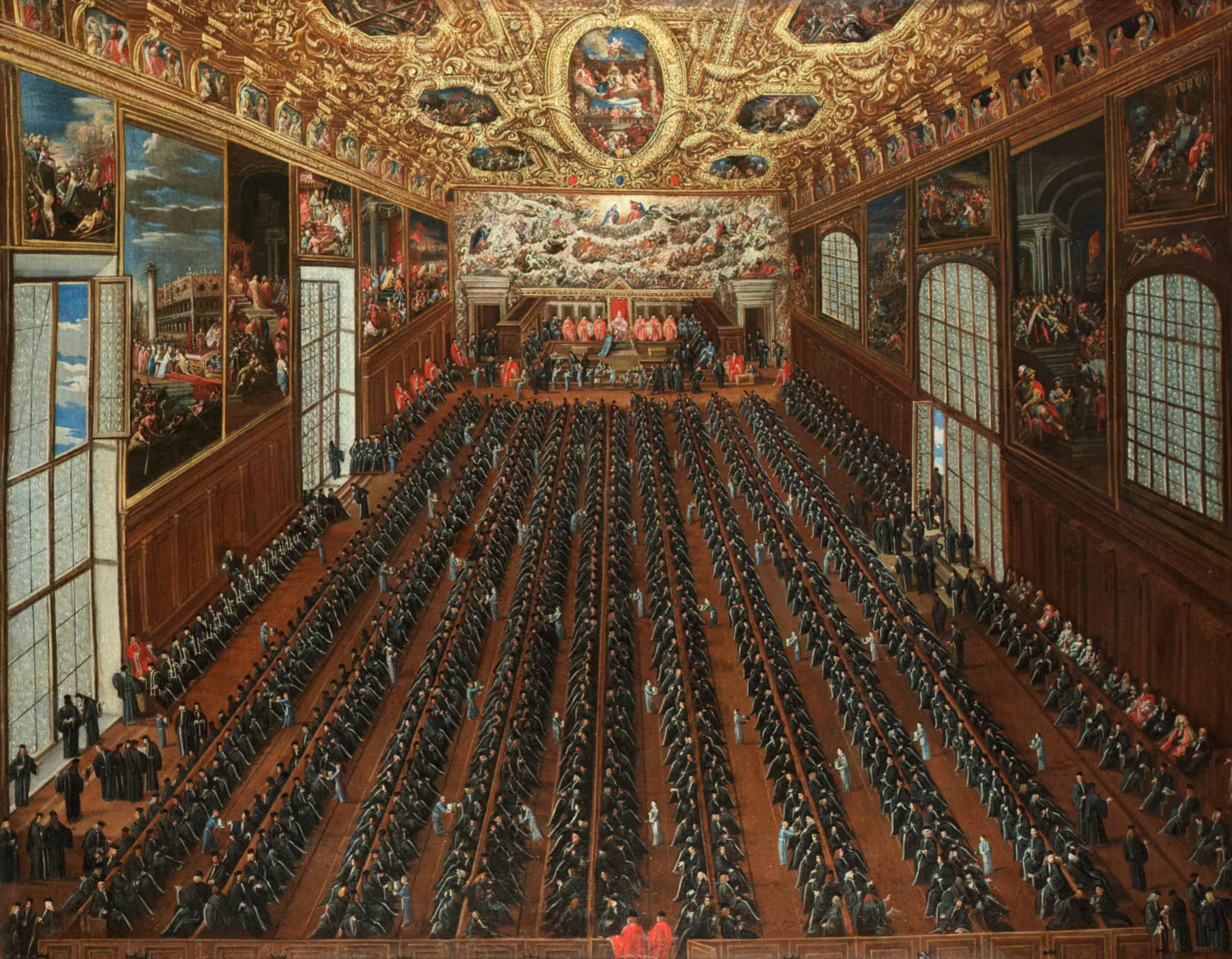


Leave a Reply